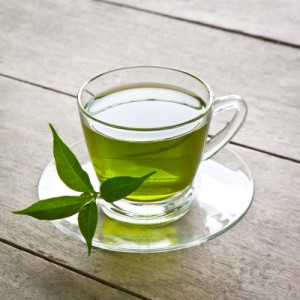 As women, we naturally are aware of and get concerned about our hormones. Not only do they fluctuate during different stages of development and life, but they can also fall out of balance. And for so many women today, too much sex hormone is manifesting as uterine fibroids, endometriosis, and reproductive cancers in the breast or uterus. Here’s the good news: you have the power to prevent, and in some cases, heal these conditions through diet, nutritional supplementation, and lifestyle practices.
As women, we naturally are aware of and get concerned about our hormones. Not only do they fluctuate during different stages of development and life, but they can also fall out of balance. And for so many women today, too much sex hormone is manifesting as uterine fibroids, endometriosis, and reproductive cancers in the breast or uterus. Here’s the good news: you have the power to prevent, and in some cases, heal these conditions through diet, nutritional supplementation, and lifestyle practices.
This article and the following two will briefly address three aspects of hormone metabolism: production, transport, and elimination, because while we often focus on how much estrogen we have (for example), how your body handles it is equally important.
Steroid hormone production begins with cholesterol and can follow a number of pathways that can eventually lead to the production of one of the three forms of estrogen: estradiol, estriol, or estrone. Like so many health related issues, functional medicine recognizes that your sex hormone levels can be negatively impacted not only by genetics, but also by nutritional deficiencies, excess weight, insulin dysregulation, inflammation, impaired detoxification, and stress. And for women who are susceptible to or are suffering from the conditions I mentioned above, by managing these conditions, you can better regulate your hormones.
For example, if you consider just one enzyme, aromatase, that stimulates the production of estrogens, here are five situations where it can inappropriately take action:
- excess adipose tissue (specifically belly fat, or VAT) increases inflammation and elevates estrogen production by stimulating aromatase production;
- excess insulin stimulates aromatase which stimulates production of estrogen;
- the pesticide atrazine stimulates aromatase;
- fibroids and endometriosis tissue themselves have high aromatase activity and produce estrogen;
- stress also creates an estrogen-dominant environment which stimulates aromatase
So, one strategy to get a handle on estrogen production would be to decrease aromatase activity. Here are some natural aromatase inhibitors that can easily be added to your diet:
Dietary fiber and lignans – Ground flax as a source of lignans can be added to smoothies, sprinkled on your steel-cut oats or salads, or added to your pancake or muffin batters.
Soy isoflavones – I know many people avoid soy like the plague and for good reason. Most soy in our food system is genetically modified and ubiquitous in the processed food world in the forms of textured soy protein, soy lethicin, and soybean oil. And some people may have food sensitivities to soy.
There’s also conflicting information about whether or not phytoestrogens activate estrogen receptors:
- one interpretation is that they bind to the receptor and block the activity of stronger estrogens.
- data to suggest that phytoestrogens bind to ER-beta, which inhibits cell growth, versus ER-alpha, which activates it;
- additional data to suggest that isoflavones block cell growth through mechanisms unrelated to estrogen receptor binding.
I believe that organic soy that’s been fermented to neutralize the anti nutrients (found in all grains and legumes) is perfectly safe to eat occasionally. Acceptable forms include miso and tempeh (and natto). And some health professionals recommend whole soy such as edamame.
Resveratrol – Grape seeds, and red wine, with California Pinot Noir and French Cabernet topping the list, are good sources of this phytonutrient. Of course, go easy on alcohol because of the sugar content and because excess alcohol will increase the risk of breast cancer.
White button mushrooms – Lightly saute and add to salads or make a creamy mushroom soup thickened with coconut milk.
Green tea – Lately the benefits of EGCG found in green tea have been all over the media for fat loss; however, please don’t treat it like a magic bullet. If you’re concerned about the caffeine, to eliminate much of it, add boiling water to the tea bag and steep for a couple of minutes, then replace the water with fresh, boiled water.
Of course, adding these food sources into an eating plan and lifestyle strategy that supports an overall balance of hormones will make them more effective. Next time, I’ll look at hormone transport and why it matters.
If you’re ready to take control of your hormones holistically, I can help you get started. Contact me for a breakthrough session today!
Image courtesy of zirconicusso
